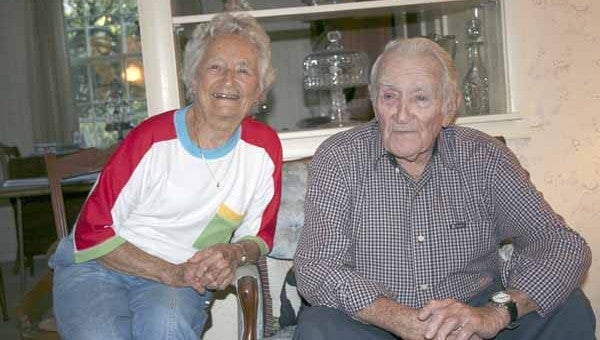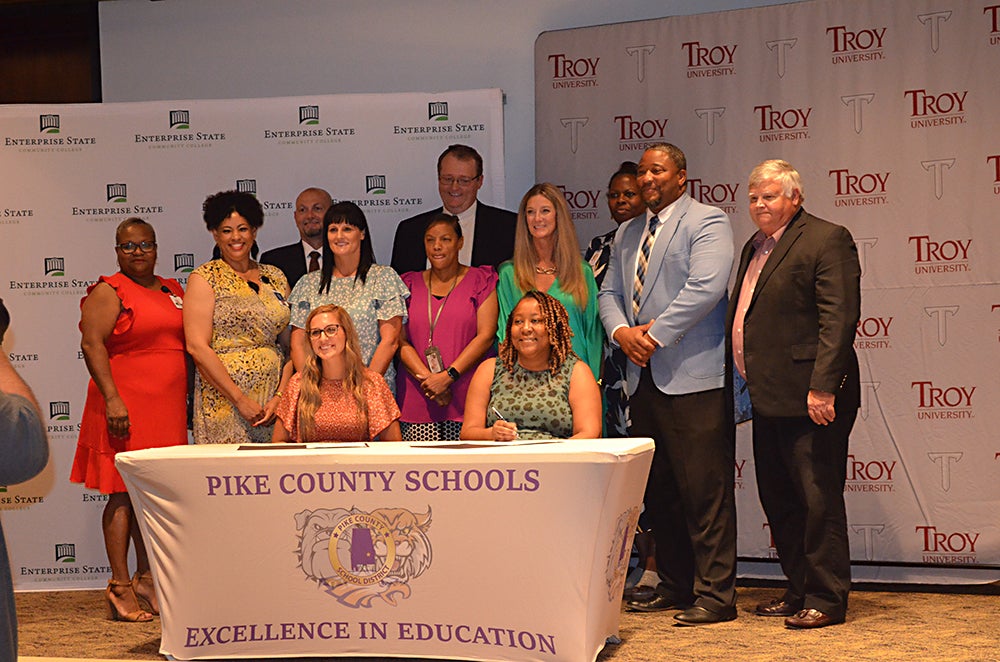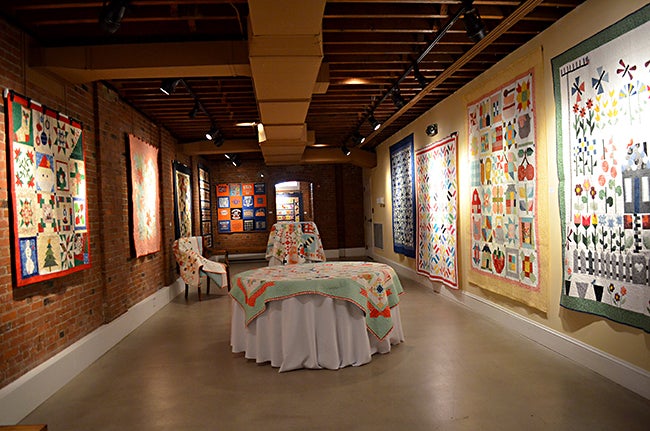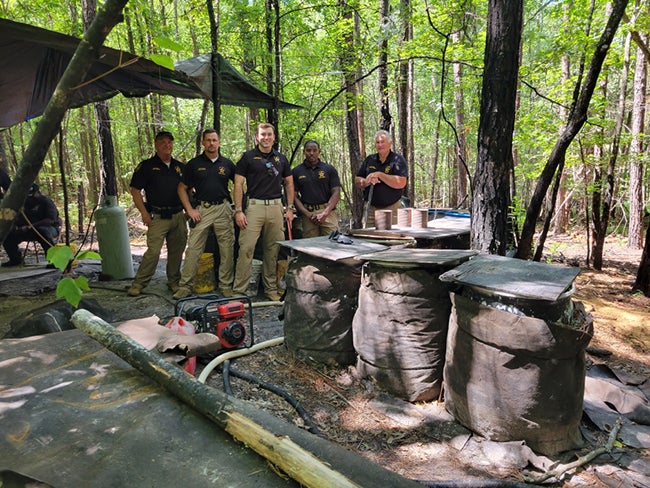Banks school to host ‘a family reunion’
Published 11:00 pm Friday, October 26, 2012

Wilda Steele and Dick Barr attended Banks grammar school in the 1930s. They will be among the Banks School alumni who will share the stories of the early days at the school during the Banks School (Family) Reunion from 9 a.m. until 2 p.m. at the Banks School on Nov. 3. All Banks School alumni and students and their families are encouraged to attend.
Excitement is running rampant in the usually sleepy town of Banks.
It’s been that way since the plans for a Banks School Reunion were made public.
“We like to say that everybody’s who’s anybody will be at the Banks School Reunion on Saturday, Nov. 3,” said Charity Maulden, president of the sponsoring Banks School PTO. “We don’t say that in a bragging way. It’s just that anyone who ever attended Banks School is a part of a great extended family. So the Banks School Reunion is more than a school reunion. It’s a family reunion.”
A highlight of the “family reunion” will be the gathering tents for the different decades of Banks School classes.
The classes, going back to the 1920s, will get together in their tents to visit with each other and share stories and tales of their days at Banks School. The gatherings will be times of telling and listening.
Maulden said those who want to know more about the history and lore of Banks School will be welcome to sit in on any of the gatherings and enjoy the stories being told.
Wilda Steele laughingly said she and her brother, Dick Barr, Jr., just might be the most “storied” of all the Banks School alumni.
Steele taught at Banks School from 1960-1980 and will share stories from the “Golden Rule” school days but, more importantly, she also enrolled in first grade at Banks School in 1929. Her brother followed a year later. Both completed their “grammar school” and junior high school educations at Banks School.
“My first grade teacher was Alma Eppison and what I remember most about first grade was sitting on the reading bench and watching the pipe from the coal burning stove fall on Knox Green’s head,” Steele said, laughing. “Knox said, ‘Oh! Have I got ‘put’ on my head?’”
Steele said she and her brother attended Banks School when it was a two-story wooden building with the auditorium upstairs.
Grade five held classes on the stage and grade six on the floor.
“There was a folding door that went across the room and it was pulled,” Steele said. “Grades seven, eight and nine met all together behind the folding door. There was no kindergarten. We didn’t know about anything like that.”
Barr said the conditions at Banks School were rather primitive by today’s standards.
“We had an old coal-burning stove to keep us halfway warm in the winter and widows that raised so we could stay halfway cool in the summer,” he said. “We didn’t have water fountains. There was a metal water cooler with a spicket that sat on the back steps. When you wanted a drink of water, you made a cup out of notebook paper and that’s what you drank out of.”
Barr said a “feature” of country schools back then was the outdoor toilets.
“We had one set of toilets for the boys and one for the girls,” he said, laughing. “The toilets were open and they weren’t one seaters. The had several holes.”
Recess was a fun time at school and the children would jump rope and play hopscotch and games like two-eyed cat and “Big guinea, little guinea, all squat.”
Times were not easy back in the 1930s and a lot of children came to school with nothing for their lunch except at cold biscuit and syrup in a jar.
“They would poke a hole in the biscuit and pour it full of syrup,” Barr said. “That would be all they had to eat at school that day and probably didn’t have much more at home.”
Steele said that some children would be so hungry that they would steal lunches from the other children who were more fortunate.
Barr said that as he got older, he would be lucky enough to have a nickel a week to spend.
“But you could buy a Baby Ruth for a penny,” he said.
When it was time to go to junior high school, the Banks students had to go to Troy to take a test to see if they were ready for such a big jump in their early education.
“I don’t know if the children in Troy had to take the test but all of the children in the county schools did,” Steele said.
When Steele reached the seventh grade, the size of the eighth and ninth grade classes had dwindled.
“So many of the students had to stay out of school to work on the farm,” she said. “I think there were only about three students left in the eighth grade.”
Something really remarkable happened when Steele was in eighth grade. A brand new schoolhouse, a brick schoolhouse, was being built.
“Because the new school was going up, we had to have classes in a cotton warehouse,” Steele said. “We had children scattered all over the community.”
For the young boys, school in a warehouse was a great adventure.
“The warehouse had bales of cotton stacked all around,” Barr said. “Chickens would get in the bales and lay eggs.”
Chasing chickens was an impromptu game but Barr didn’t say what the 13-year-old boys did with the eggs.
One student incident happened on April Fool’s Day.
“We told the principal if he didn’t take us to the woods we were all going to run away,” Steele said. “He took us to the woods and we got to have a picnic.”
Banks School had a boys’ basketball team but the girls could only stand on the sidelines and watch.
“We played basketball outside on a dirt court and we had a pretty good team,” Barr said. “We also played tennis, but not as a team. We just had a racquet and a ball and a net to hit it over.”
But, school in the new brick building was a lot different from the school days in the old wooden building.
“Mrs. Lola Lawson was the principal and she ran the school like a military school,” Barr said. “We had to change classes and that was all new to us. When the school bell rang to dismiss class, we had to stand up and march out of the room row by row. Like we were soldiers.”
But the students took great pride in their new school building.
“We had a big auditorium and we had assemble programs every Friday,” Steele said.
But trouble brewed in the new auditorium.
“There were these little rubber pads on the bottom of the seats that folded down,” Barr said. “Some of the boys pulled them off and cut them in little strips and threw them at each other.”
That did not sit well with Principal Lawson.
“She got us all in the auditorium and made us sit there without saying a word until the ones who cut the pads and threw them owned up to it,” Barr said. “She sat on the stage and watched us.”
It took several days for the 27 boys to own up and, when they did, the principal sent them out to the sugarberry bush for switches.
Steele and Barr said the there was no sparring the rod in the early days of Banks School.
“We were serious about learning,” Steele said. “We were good students and appreciated the opportunity to learn.”
And, it’s still that way at Banks School. In the second decade of the 21st century just as in the second decade of the 20th century, the students are good students and appreciate the opportunity to learn. And all of the Banks School family will come together on Nov. 3 to renew friendships, make new ones and tell stories and listen to stories being told, much like all “families” do when they have a rare chance to all be together.





